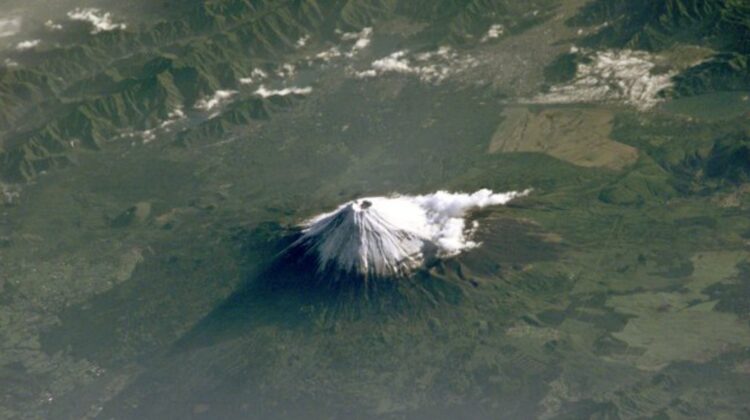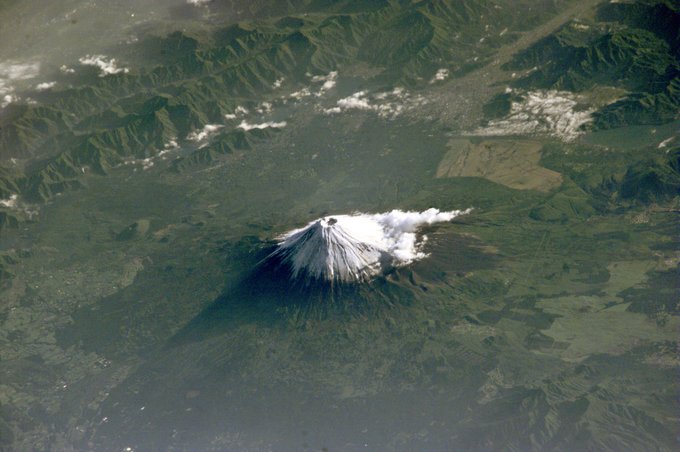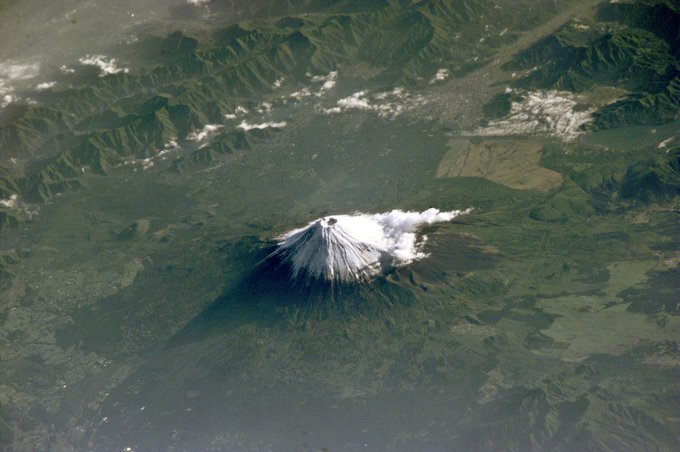
Mount Fuji is one of the most iconic natural landmarks in Japan, and a popular tourist destination for those visiting the country. But have you ever wondered what it looks like from space? Thanks to the Expedition 2 crew aboard the International Space Station, we have a stunning image of Mount Fuji from above.
The photo was taken on May 27, 2001, with a Kodak DCS460 Electronic Still Camera and an 800 mm focal length lens. From their vantage point high above the Earth, the Expedition 2 crew captured the majestic mountain surrounded by clouds and bathed in sunlight. The snow-capped peak stands out against the green and brown landscape below, creating a stunning contrast that is sure to take your breath away.

Mount Fuji is the highest mountain in Japan, standing at 12,388 feet (3,776 meters) tall. It is a dormant volcano located on Honshu Island, about 60 miles southwest of Tokyo. It is a UNESCO World Heritage site and a popular destination for hikers and tourists from around the world. Mount Fuji has long been a symbol of Japanese culture and is often depicted in art, literature, and film.
The Expedition 2 crew was part of a mission to the International Space Station, which orbits the Earth at an altitude of approximately 250 miles (400 kilometers). From their vantage point, they were able to capture stunning images of Earth’s natural wonders, including mountains, oceans, and deserts.
The photo of Mount Fuji from the International Space Station is a reminder of the beauty and wonder of our planet. It is a testament to the power of human technology and exploration, and a tribute to the natural landmarks that make our world so unique and special.

As we continue to explore space and push the boundaries of what is possible, let us not forget the beauty and importance of our home planet. Let us work together to preserve and protect the natural wonders that make Earth such a special place. And let us continue to be inspired by the stunning images of our planet captured by astronauts aboard the International Space Station.

Leave a Reply